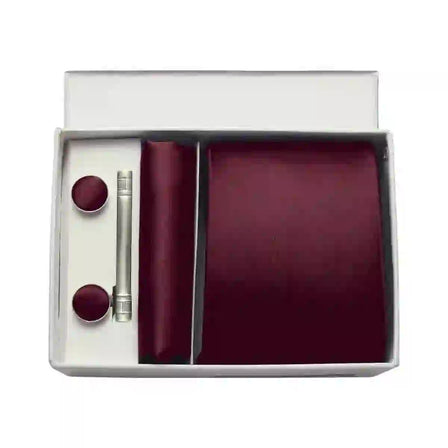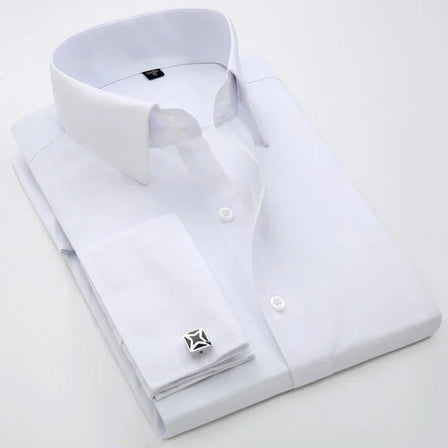Fashion styles for men often seem mysterious and complicated, leaving many guys wondering why some outfits just work while others fall flat. Contrary to popular belief, great style isn't something you're born with—it's a skill anyone can develop with the right approach.
Despite what fashion magazines suggest, you don't need designer labels or a complete wardrobe overhaul to look good. Whether you're considering adding versatile pieces like a denim jacket, chino pants, or a classic polo shirt to your collection, the fundamentals remain the same. Actually, most well-dressed men follow specific principles that can be learned and applied by anyone.
This expert guide cuts through the confusion to reveal what truly matters in men's fashion. We'll explore practical techniques that make a real difference, from understanding proper fit to building a functional wardrobe with timeless items. Furthermore, you'll discover how to develop confidence in your personal style without wasting money on trends that don't last.
Realize That Style Is a Learnable Skill
The myth of "born stylish" men needs immediate dismantling. Many guys look at well-dressed men and assume they possess some magical fashion gene—but this simply isn't true. Style is a skill that can be developed through practice and understanding, just like cooking, sports, or any other ability you've mastered in life 1.
Why no one is born stylish
Even the most iconic fashion figures weren't delivered into the world wearing perfectly tailored suits. They studied, experimented, and evolved their personal esthetics over time 2. Personal stylists consistently report that their entire profession is built on the premise that dressing well is teachable 1.
"Nobody is born in a perfectly tailored 3-piece suit, or with some magical intuition on how to dress well," notes one expert stylist 1. The stories we tell ourselves about lacking a "natural eye" for fashion are merely invisible barriers keeping us in our comfort zones 1. In reality, everyone who looks stylish today went through their own experimental phase, trying different looks before finding what worked for them 3.
How daily practice improves your look
Getting dressed provides a daily opportunity to practice and nurture your style skills 1. Think about this—unless you live in a nudist colony (in which case, you're probably reading the wrong article), you need to get dressed every day, creating countless opportunities to refine your approach 1.
This consistent practice leads to noticeable improvements through:
- Learning what works for your body: Daily experimentation helps you understand which fits, colors, and styles enhance your natural features 4
- Developing instincts: Over time, you'll naturally reach for items that make you look and feel good 5
- Building confidence: Each successful outfit strengthens your style intuition 6
Men with great style aren't magical beings—they've simply been practicing longer than you have 3. Most style-conscious people started paying attention to their clothes much earlier in life, giving them years of experimentation that you can accelerate through intentional practice 3.
The mindset shift that changes everything
The fundamental change happens when you stop thinking about fashion as something external and start viewing it as an expression of your authentic self 7. As one style expert puts it, "Style is something that you create through the will of your personality. You take what's out there in your world and you try to mold it and bend it and turn it to fit you" 7.
This distinction matters tremendously: "Style is about liking what you like, and fashion is about liking what other people want you to like" 7. In essence, developing personal style means shifting from an external focus (what others think) to an internal focus (what genuinely resonates with you) 7.
Changing your mindset translates to little actions that collectively make you look and feel like the best version of yourself 8. Just as importantly, confidence doesn't need to come first—it grows organically through deliberate practice and incremental improvements 1. You don't need to start with confidence to improve your style; rather, your confidence develops as you work to enhance your appearance 1.
Treating your clothing as a personal museum of your life experiences allows your wardrobe to tell a story uniquely yours—one that can never be duplicated 8. By approaching style as a learnable skill rather than an innate talent, you open yourself to continuous improvement and genuine self-expression through what you wear.
Start With the Basics: Fit, Color, and Fabric
Building a stylish wardrobe doesn't require memorizing complex fashion rules. Instead, mastering three foundational elements—fit, color, and fabric—will dramatically improve your appearance. These basics form the cornerstone of men's fashion styles that stand the test of time.
Why fit solves 90% of your style problems
The single most important element of style isn't brand names or price tags—it's how your clothes fit your body. A well-fitted garment enhances your natural physique and projects confidence, consequently transforming even basic items into statement pieces.
Proper fit should:
- Highlight your best features
- Feel comfortable without restricting movement
- Provide a clean, balanced silhouette
"Fit is king" isn't just a catchy phrase—it's the fundamental principle that separates stylish men from those still figuring things out. Clothes that fit properly lie naturally across your body without constricting or creating unnecessary bulk. Additionally, they allow enough room for comfortable movement while maintaining a structured appearance.
Many men mistakenly buy clothing that's too large, believing it will be more comfortable. However, this approach typically results in a sloppy, untidy appearance. Even expensive designer pieces look cheap when they don't fit correctly. Conversely, modestly priced items can look remarkably premium when they fit impeccably.
For jackets and shirts, pay special attention to shoulder seams, which should end precisely at your natural shoulder bones. The chest should feel comfortable without pulling, especially when buttoned. For pants, focus on proper waist fit and length—too long creates puddles of fabric at the ankles, while too short looks awkwardly undersized.
Neutral colors that always work
Neutral colors serve as the backbone of a versatile, timeless wardrobe. These understated shades aren't boring—they're the secret weapon of well-dressed men, providing a solid foundation for any outfit.
The core neutral colors every man should embrace include:
- Black
- White
- Navy and light blue
- Gray (in various shades)
- Brown and khaki
- Olive green
Think of these neutral tones as the base of a pizza—they're essential for supporting everything else. Moreover, they should constitute the majority of your wardrobe in terms of color percentages.
Neutral colors excel in versatility, allowing for easy mixing and matching. A navy blazer, for instance, works perfectly with gray trousers, khaki chinos, or dark jeans. This adaptability means you need fewer pieces overall while maintaining plenty of outfit options.
For those concerned about looking dull, remember that neutral foundations actually enable you to incorporate brighter accent pieces effectively. A colorful pocket square or tie stands out beautifully against a neutral suit without overwhelming your overall appearance.
Understanding fabric quality without overspending
Fabric quality significantly impacts how clothes look, feel, and last. Fortunately, you don't need to break the bank for good materials—you just need to know what to look for.
Natural fibers generally offer superior quality and comfort compared to synthetics. Cotton breathes well and feels soft against skin, wool provides excellent insulation and drape, and linen offers exceptional summer comfort despite its tendency to wrinkle.
To evaluate fabric quality without specialized knowledge:
- Touch test: Quality fabrics feel smooth and substantial. Scrunch the fabric in your fist—better materials will bounce back with minimal wrinkling.
- Transparency check: Hold the fabric up to light; less transparency usually indicates higher quality and density.
- Weave examination: Look for consistent, even weaving without gaps or irregularities.
For everyday wear, aim for fabrics with thread counts around 120-140. Higher counts feel luxurious but may be more fragile and expensive. Blends can offer practical benefits—like a small percentage of elastane in denim for stretch—while maintaining the primary benefits of natural materials.
Brands like J.Crew, Everlane, and Uniqlo consistently offer good fabric quality at reasonable price points. Their items typically feature natural fibers or thoughtful blends that balance durability, comfort, and style without commanding premium prices.
Build a Timeless Wardrobe Before Chasing Trends
Timeless style stands apart from fleeting trends, giving you a wardrobe that remains relevant year after year. In fact, the most stylish men often rely on classic pieces as their foundation, adding carefully selected contemporary elements only when appropriate.
Classic pieces every man should own
A well-curated wardrobe centers around versatile staples that form the backbone of countless outfit combinations:
- Quality suits: Navy and charcoal gray suits provide exceptional versatility for both formal events and everyday wear when separated
- Well-fitted shirts: Crisp white and light blue button-downs serve as the cornerstone of classic style
- Versatile trousers: Dark wash jeans, tailored chinos, and wool dress pants create a solid foundation
- Essential outerwear: A classic trench coat, peacoat, or well-structured blazer adds sophistication to any look
- Timeless footwear: Quality leather dress shoes and minimalist sneakers complete your ensemble
Above all, focus on pieces with moderate proportions and classic silhouettes that ensure your clothing remains appropriate as fashion trends shift and your body changes over time.
How to avoid the 'nothing to wear' trap
The 'nothing to wear' paradox occurs when your closet is filled with clothes yet nothing seems to work together. This frustration typically stems from accumulating trendy, single-purpose items that quickly lose relevance.
To escape this cycle, prioritize interchangeability. As one style expert notes, "If everything involved is interchangeable, then three jackets, three pairs of trousers, and five shirts gives you forty-five unique outfits." This multiplicative effect transforms a small collection into a versatile wardrobe.
Simultaneously, adopt a quality-over-quantity mindset. Fewer, better items create a more polished, sophisticated wardrobe that remains relevant throughout the years. Stick primarily to neutral color palettes that mix and match effortlessly—navy, gray, white, black, and khaki—which function like building blocks for your personal style.
When and how to add trendy items
Trends certainly have their place in a well-rounded wardrobe. The key lies in moderation and thoughtful integration. Initially, determine if a trend genuinely appeals to your personal style rather than simply following what's momentarily popular.
Afterwards, consider toned-down versions of trendy pieces. Many current trends actually evolved from classic styles—essentially, fashion operates somewhat cyclically, with iconic styles from decades past often resurfacing. For example, Harrington jackets and field jackets were once just trends before becoming timeless staples.
Inject personality through accessories and secondary pieces while keeping your foundation classic. This approach creates a signature look uniquely yours while maintaining versatility. Remember that confidence remains crucial—cultivating an authentic style that tells your personal story will always outshine blindly following trends.
Use Smart Shopping and Styling Tricks
Beyond mastering the basics, smart shoppers employ tactical methods that streamline the process of building and experimenting with their wardrobes. These practical techniques can save time, build confidence, and encourage stylish risk-taking without overwhelming you.
The 'Pull 3' dressing room method
Shopping efficiently means eliminating unnecessary trips between the rack and the dressing room. The "Pull 3" method is remarkably simple yet effective: whenever you're shopping for clothes, grab the same item in three sizes—your usual size, one size up, and one size down 1.
This approach works like preparing ingredients before cooking—having everything ready saves tremendous time. Consider how inefficient it would be to retrieve ingredients one at a time while making a meal; shopping works the same way 1. Many shoppers waste precious minutes taking single items to try on, only to discover they need different sizes. The Pull 3 method eliminates this frustration, particularly when trying new brands or styles with unfamiliar sizing.
The 'Swap Trick' to try new styles
Introducing new styles into your wardrobe doesn't require radical changes. The "Swap Trick" offers a gradual approach to experimentation:
- Start with a comfortable, classic outfit you already wear regularly
- Swap just one piece for something slightly more adventurous
- As your comfort grows, continue swapping additional pieces 9
Think of this like testing hot sauces—you wouldn't jump from mild directly to ghost pepper 1. For example, if you typically wear neutral colors, begin by swapping your white oxford shirt for a patterned or colored version 9. Notice how this single change already transforms your look while maintaining your comfort zone.
Breaking in new outfits for confidence
Even with clothes that fit perfectly, wearing a new outfit can feel strange and uncomfortable—particularly for important occasions. The solution? "Break in" new outfits by wearing them for an entire day before your event 1.
This technique works wonderfully for first dates or job interviews. Wear your planned outfit while running errands or during a workday beforehand. By the time your actual event arrives, you'll have adjusted to how the clothes feel and move, eliminating self-consciousness and fidgeting 1. Even a few hours of pre-wearing helps tremendously if you're short on time.
As one style expert observed after trying this approach for a date: "By the time the date rolled around, I had spent an entire day in my date outfit and felt relaxed" 1.
Grow Into Your Style With Confidence
The paradox of style confidence often trips up men seeking to improve their appearance. Many think, "Once I feel confident, I'll dress better," yet the opposite is true in reality.
Why confidence comes after action
You don't need confidence to start improving your style—confidence naturally develops as you practice and improve. Indeed, waiting for confidence before taking action creates a perpetual holding pattern. Start with just one well-fitted, classic outfit to build momentum. That initial success fuels further exploration as your comfort grows.
How to build your style identity over time
Personal style is a journey requiring patience and experimentation. As one style expert explains, "Personal style is an expression of your true self, and tends to reflect how you feel most comfortable and most natural." Your style should capture a snapshot of your character, cultural alignments, and values. Pay attention to which pieces you naturally reach for—these reveal your true preferences. Challenge yourself to dress better even in casual situations, as this strengthens your style muscles.
Surrounding yourself with style inspiration
"You are the average of the 5 people around you," applies perfectly to style development. The simplest change? Start following stylish accounts on social media. This dual benefit exposes you to inspiring looks while normalizing dressing well in your daily visual diet. Look for inspiration from various sources—brand lookbooks, film characters, or historical eras. Construct a personal collection of looks that resonate with you, creating a visual library for reference and experimentation.
Conclusion
Fashion styles for men ultimately come down to understanding fundamental principles rather than chasing elusive trends. Throughout this guide, we've dispelled the myth that great style requires innate talent or expensive designer labels. Style remains a learnable skill that improves with consistent practice and attention to detail.
Most well-dressed men focus primarily on three core elements: proper fit that enhances their natural physique, a neutral color palette that allows endless combinations, and quality fabrics that look and feel superior. These fundamentals solve the vast majority of style problems without requiring complex fashion rules.
Building your wardrobe should begin with timeless pieces that work together seamlessly. A carefully selected collection of classic items provides the foundation for countless outfits that remain relevant year after year. After establishing this base, you can thoughtfully incorporate trends that genuinely resonate with your personal esthetic.
Smart shopping methods like the "Pull 3" technique and strategic outfit experimentation through the "Swap Trick" make the process both efficient and enjoyable. Additionally, breaking in new outfits before important occasions eliminates unnecessary self-consciousness when it matters most.
Confidence develops naturally as you take action and refine your approach. Start with small steps, pay attention to what feels authentic, and gradually build a style identity that genuinely represents who you are. Surrounding yourself with inspiration accelerates this journey, whether through social media, film, or observing well-dressed individuals in your daily life.
Personal style evolves over time, reflecting your character, values, and experiences. Though mastering these principles requires patience, the rewards extend far beyond mere appearance. Developing your unique style creates a powerful form of self-expression that enhances both how others perceive you and how you perceive yourself.
Now you have all the tools needed to transform your approach to dressing well. The secret to great style isn't something reserved for a select few—it's available to anyone willing to learn and apply these proven techniques.



